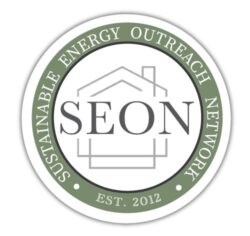When to Consult the Handbook
There are four main situations that call for a review of this Handbook:
- When making additions, alterations, renovations or
repairs to existing homes. - During the new construction design stage, review
the requirements up front. It will be easier and less
expensive at this stage to make any modifications
needed to ensure compliance. - In the event of new construction design changes,
review whether the home still complies when there
are changes. This will ensure that there are no
surprises upon completion. - Upon completion, State law requires every Vermont
builder to certify that the home complies with the
Energy Code as built, altered or repaired.
The Vermont Residential Building Energ
What’s inside
Contents
- How to Use This Handbook……………………………………………………………………. 1
- When to Consult the Handbook …………………………………………………………….. 1
- Overview………………………………………………………………………………………………… 1
- What’s New in RBES 2020?…………………………………………………………………….. 1
- If You Need Help ……………………………………………………………………………………. 2
Chapter 1
- Rules for Compliance …………………………………………………………………….8
- 1.1 Builder’s Responsibilities…………………………………………………………………… 8
- 1.2 Buildings That Must Comply…………………………………………………………….. 8
- 1.3 Exempt Buildings……………………………………………………………………………… 9
- 1.4 Owner/Builder Special Provision………………………………………………………. 9
- 1.5 Act 250 Provisions…………………………………………………………………………… 10
- 1.6 Penalty for Not Complying with the Residential Energy Code ………… 10
Chapter 2
- Basic Requirements…………………………………………………………………….12
- 2.1 Building Envelope …………………………………………………………………………… 13
- 2.2 Vapor Retarders………………………………………………………………………………. 21
- 2.3 Materials and Equipment Information…………………………………………….. 26
- 2.4 Heating and Cooling……………………………………………………………………….. 26
- 2.5 Service (Potable) Water Heating ……………………………………………………… 30
- 2.6 Electrical…………………………………………………………………………………………. 31
- 2.7 Dampers…………………………………………………………………………………………. 31
- 2.8 Lighting…………………………………………………………………………………………… 31
Chapter 3
- Ventilation and Combustion Safety Requirements………………..34
- 3.1 Ventilation ……………………………………………………………………………………… 34
- 3.2 Combustion Safety………………………………………………………………………….. 40
Chapter 4
- Existing Homes: Additions, Alterations, and Repairs……………..44
- 4.1 Exceptions………………………………………………………………………………………. 44
- 4.2 Compliance …………………………………………………………………………………….. 45
- 4.3 Prescriptive Compliance for Additions……………………………………………. 46
- 4.4 U-Factor Alternative Compliance for Additions……………………………… 47
Chapter 5
- The Package-Plus-Points Prescriptive Compliance Method……….48
- 5.1 When to Use the Packages-Plus-Points Method……………………………………………. 48
- 5.2 Meeting BASE Code Using the Packages-Plus-Points Method………………………. 49
- 5.3 Meeting STRETCH Code Using the Packages-Plus-Points Method………………. 53
- 5.4 Building assembly and window examples……………………………………………………… 53
Chapter 6
- The REScheck Software Compliance Method …………………………….64
- 6.1 How the Software Method Works…………………………………………………………………. 65
- 6.2 Using REScheck Software………………………………………………………………………………. 65
- 6.3 How to Access the REScheck Software…………………………………………………………… 66
Chapter 7
- The Home Energy Rating Compliance Method…………………………..68
- 7.1 How the Home Energy Rating Method Works……………………………………………… 68
- 7.2 Advantages of the Home Energy Rating Method ………………………………………….. 69
- 7.3 The Home Energy Rating……………………………………………………………………………… 70
- 7.4 Minimum Thermal Envelope Efficiency Levels for HERS Compliance………….. 70
- 7.5 HERS Compliance Process …………………………………………………………………………… 72
Chapter 8
- Certification………………………………………………………………………………………74
- 8.1 Types of Certification……………………………………………………………………………………. 74
- 8.2 The ‘Vermont Residential Building Energy Standards Certificate’…………………. 74
- 8.3 The ‘Vermont Owner/Builder Disclosure Statement’…………………………………….. 78
